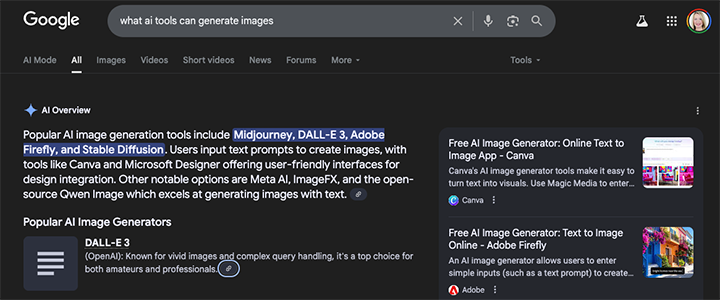The Changing Face of Search Results

A few years back, Featured Snippets were the big takeaway from conference sessions about web content. They were pieces of content that demonstrated authority and credibility for a topic and cited one source. If the content was structured and published correctly, Google would find it and feature it at the top of the search engine results pages (SERPs).
Today, Google’s AI Overviews and Featured Snippets provide quick answers but with different approaches, but Featured Snippets aren’t dead. Both are distinct features within Google Search, aiming to provide quick answers but with different approaches. AI Overviews are relatively new, using Google’s Gemini language model to synthesize information from multiple sources, while Featured Snippets typically pull information from a single, highly relevant source.
It is still important to strive to be the authority on a subject for Featured Snippets, however the new goal is to position the content and source cited to be consumed by AI Overviews to ensure a spot on the top of the SERPs. Unfortunately, it means that click-through rates on featured snippet content will be watered down by AI Overviews, and there is nothing you can do about that.
Use this checklist before hitting “publish” to increase your chances of earning a Google Featured Snippet while strengthening SEO.
Featured Snippet Optimization Checklist
Research and Targeting
- Identify the primary keyword and related long-tail queries.
- Check “People Also Ask” and related searches for snippet-worthy questions.
- Choose one main question per section to target.
Content Structure
- Use H2 for main questions and H3 for sub-questions/steps.
- Provide a direct, 40-60-word answer immediately under the heading.
- Expand with details, examples or context after the short answer.
- Break down content into scannable sections (no text walls).
Snippet-Friendly Formats
- Definition Snippet: Use a clear, concise 1-2 sentence explanation.
- List Snippet: Use bullet points or numbered steps.
- Table Snippet: Create comparison or data tables.
- How-To Snippet: Use a step-by-step numbered process.
Technical SEO
- Add FAQ Schema or How-To Schema when relevant.
- Ensure correct H1–H3 hierarchy in HTML.
- Include internal links to related resources.
- Optimize meta title and description to match intent.
Maintenance
- Verify that stats, data and examples are up to date.
- Refresh content at least once a year (or more in fast-moving industries).
- Track snippet ownership in Search Console / SEO tools.
Pro Tip: Always answer the question as if you were explaining it to a smart 12-year-old — clear, direct and easy to understand.
